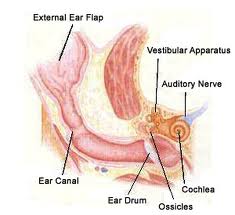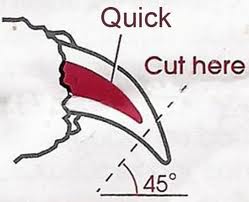Care Tips

How to Brush a Dogs Teeth
Make brushing your dogs teeth a daily routine. Be consistent and your tooth brushing experience will be great!!!
If your dog isn’t accustomed to tooth brushing don’t worry, start out by rubbing your dogs gums with your index finger. This will make your dog get used to his or her gums being massaged.
Gradually introduce the toothbrush with toothpaste for dogs; these are specially made with flavors that a dog can’t resist. Use a toothpaste that appeals to your dog, put a small amount on the toothbrush and start by brushing the back teeth then work your way up to the front teeth. Use a back and forth motion to brush the teeth.
Do not use toothpaste formulated for humans as it can cause an upset stomach in animals.
Oral Disease
Oral disease is the most common health problem for pets. By the age of three, approximately 80 % of dogs and 75 % of cats have developed periodontal disease.
If the teeth have a lot of tartar on them or the gums are swollen or bleed easily then this should be brought to the attention of your vet. Left untreated, the infection can lead to tooth decay or tooth loss and can even spread through the bloodstream and cause kidney, liver, lungs and heart problems.
By preventing oral disease, you can help your pet live a healthier, happier life. Do not feed your pet table scraps, this can increase the formation of plaque and tartar. Dry, crunchy pet food can help clean plaque from the teeth.
Common signs of Oral Disease
- Yellow-brown tartar near the gum line
- Red, swollen or bleeding gums
- Persistent bad breath
- Abnormal drooling
- Pawing at the mouth
- Sneezing and nasal discharge
- Loose or missing teeth
- Difficulty eating or loss of appetite
- Behavior changes
Avoid ear problems with routine maintenance
Because of the shape of our pets’ ear canals, they are particularly prone to ear problems. Bacteria, viruses, yeast and many parasites thrive in a warm, moist (and dirty) environment. Cleansing your pet’s ears should be a weekly ritual from a very young age. Cleaning ears and allowing adequate air circulation is especially important for dogs with long or floppy ears.
Here are some tips to help you with this easy procedure:
- ♦Gently pull the earflap upward to straighten the ear canal. Squirt an ear cleaning solution into your pet’s ear and massage the base of the ear between your thumb and forefinger for 20 to 25 seconds. This ensures that the cleansing solution gets a bit deeper into the ear. We recommend a natural ear cleaner for this step.
- Let your pet shake out the extra solution, then get him relaxed again for the next step.
- Use a soft cloth to remove excess wax and debris that the solution and shaking have brought up. Do not insert anything down the ear canal.
- After cleaning, fold earflaps back for about five minutes to dry ear canals, and then finish with a small amount of an ear drying powder.
You’ll be surprised at the amount of debris that you can remove. Regular cleansing of your pet’s ears can prevent many potential ear problems before they start and will save you time and money in the long run. Your pet depends on hearing as one of the strongest of his senses and it just makes sense to take good care of them.
Have you noticed an unpleasant odor coming from your dog’s ears, repeated pawing at his head, a discharge, or visible redness and swelling in an ear? Does your pet’s ear appear to be painful? If so, there is likely an ear infection underway, and any inflammation/infection in the ear is cause for immediate concern and action.
Common infections of the ear
Two major types of infections occur in the dog’s ear; most common is otitis externa, an infection of the outer ear, including the ear canal up to the ear drum. More rare is otitis media, an infection of the canal behind the eardrum. All ear infections, if untreated, can lead to consequences that range from mild to severe. Especially in the case of infections behind the eardrum, the condition can lead to deafness, facial paralysis, loss of balance, and other neurological problems, which may be irreversible.
Signs of ear problems include:
- Odor
- Scratching or rubbing of the ears and head
- Discharge in the ears
- Redness or swelling of the ear flap or canal
- Shaking the head or tilting it to one side
- Pain around the ears
Changes in behavior such as depression or irritability
What causes ear infections?
Ear infections are caused by a variety of factors. It is important to note that the more serious condition of otitis media is often the direct result of an untreated case of outer ear infection.
Causes of serious ear infections include:
• Bacteria and yeast
• Moisture in ear canal following bathing or swimming
• Ear mites
• Allergies
• Foreign bodies (such as plant awns)
• Injury
• Hormonal abnormalities, or any kind of compromised immunity
In short, anything that can cause itching may lead to intense scratching and trauma, which can open the door to a serious infection.
Prevention is simple
Prevention begins with a regimen of care to keep the outer ears clean and free of debris. Dry ears after bathing/swimming, (make sure not to get water in the ears while bathing your pet). Allergies must be controlled, and any ear mite infections treated. All possible conditions that could lead to ear infections must be assessed and treated by your veterinarian to prevent bacteria and yeast from gaining a foothold.
Your veterinarian can teach you how to provide ongoing care and suggest products to use to keep your dog’s outer ears clean. Along with controlling mites and allergies, this is an effective strategy for keeping ear infections at bay. Not all ear problems can be prevented. If caught early, however, treatment is generally successful.
Caring For Your Dog’s Nails
Your dog’s nails may be one of those features you don’t pay much attention to but in reality they require regular maintenance and care. Many owners shy away from the practice of nail clipping because their dogs are not fond of having their feet handled. In this article you’ll learn all about nail care and how to take the stress out of the process for both you and your dog!
Keeping your dog’s nails trimmed short is necessary for many reasons. Overgrown nails can cause discomfort and make walking difficult. They can even start to curl over and grow into the pads of the foot, causing infections and requiring surgery. Untrimmed nails cause scratches on floors and, worse, on people. It is not unheard of in this day and age for a person to be taken to court because their dog scratched someone and left a mark.
The best way to take the trauma out of trimming is to start getting your dog used to the practice when he is a puppy.
- When he is relaxed start handling his feet gently. Massage his toes and pads.
- Soon bring out a pair of clippers or a grinder and bring it near his feet. Continue the petting and massage.
- Enlist the help of a friend and a bag of yummy treats. Have them gently hold your pet’s paw as he lies on his side. Do not restrain him – often holding an animal tightly causes way more struggling and trauma than no restraint at all!. They can feed your pet yummy treats as you cut off JUST the tip of the nail to avoid the “quick” (the center of the nail). If you accidentally hit the “quick” you will know because the nail will start bleeding. Do not panic. Apply pressure and have a styptic pen ready. This is not a serious injury.
To Use A Grinder:
- Hold your dog’s toes apart gently. Make sure you aren’t squeezing them.
- Turn the grinder on the low setting and move the sanding head around the tip of the nail, grinding it down to a smooth surface. Make sure to hold down any fur that could catch in the grinder. Be aware of the “quick” and turn off the grinder before you reach that point.
How Often Do I Need To Clip?
Some dogs’ nails are filed down naturally – especially those who take long walks on city sidewalks. However, a good deal of this has to do with the physiology of the dog. Check your dog’s nails on a regular basis. On most canines manicures should take place every 3-4 weeks.

